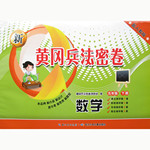题目内容
Scientists have found that human eyes are more likely to be damaged by UV rays (紫外线)while skiing in the snow-covered areas than sitting on the beach, according to a report by the UK newspaper The Telegraph.
The researchers at Kanazawa Medical University, Japan and American company Johnson conducted the study together. They looked at the effects of light reflection on newly fallen snow on a ski trail in Ishikawa District, northern Japan. They compared the results with levels of UV rays on a sand beach in southern Japan's Okinawa District.
They found that on the beach, eyes are exposed to a daily 260 kilojoules (千焦耳) of UV a square meter compared to 658 kilojoules in snow-covered areas.
The findings are supposed by the Japan Meteorological Agency. According to the agency, the reflection rate of UV light on beaches is often between 10 and 25 percent, compared to 80 percent in the new snow areas. The amount of light increased 4 percent with a 300-meter rise in height.
Most of us know that UV rays can harm the skin. That's why we wear sunscreen on our skin before we get out in the sun. But many of us may not realize that UV rays are also harmful to the eyes.
If your eyes are exposed to large amounts of UV radiation over a short period of time, you may experience a kind of sunburn of the eye, which is harmful. Your eyes will become red and feel a strange feeling. They may be sensitive to light. Fortunately, this is usually temporary and seldom causes long-time damage to the eyes.
Long-term exposure to UV radiation, however, can be more serious. Scientific studies and researches have shown that exposure to small amounts of UV radiation over a period of many years increases the chance of eye damage, which could lead to total blindness.
35.What's the finding of the scientists mentioned in the text?
A. UV rays can damage the eye.
B. Skiing in snow does harm to the eye.
C. Snow reflects more UV rays than sand.
D. The level of UV rays is low on a sand beach.
36.If a place is 1500 meters higher, the amount of light increases .
A. 15 percent B. 20 percent C. 25 percent D. 30 percent
37.What does the underlined word "temporary" probably mean?
A. Limited. B. Serious. C. Short-time. D.Unusual
38.Which could cause blindness talking about the damage by UV rays?
A. Long-time exposure to even small amounts of it.
B. Exposure to great amounts of it for a short time.
C. Short-time exposure to small amounts of it.
D. Exposure to great amounts of it for once.
C BCA

 小学课时作业全通练案系列答案
小学课时作业全通练案系列答案 金版课堂课时训练系列答案
金版课堂课时训练系列答案 单元全能练考卷系列答案
单元全能练考卷系列答案 新黄冈兵法密卷系列答案
新黄冈兵法密卷系列答案